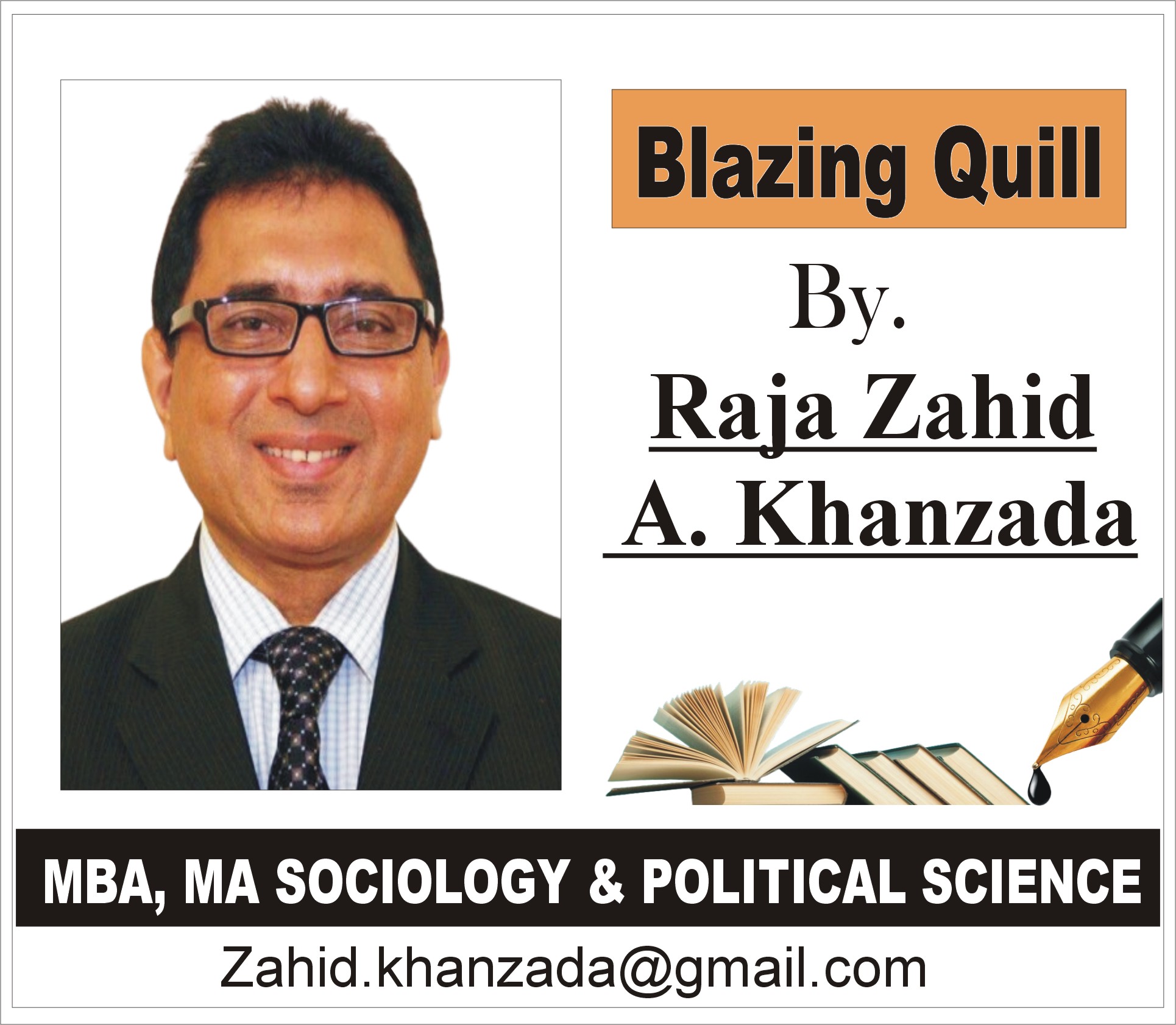From Khan to Shehbaz: How Pakistan’s US Visits in 2019 and 2025 Tell Two Different Storie
By Raja Zahid Akhtar Khanzada
World politics is, in essence, a game of chess. Every move must be calculated, every step backed by design, intent and hidden objectives. Sometimes a sacrifice, sometimes a prelude to victory. The successful ruler is one who can read the board, sense the pieces, and keep his hand firmly on the pulse of time. Those who fail to do so become pawns in someone else’s game, remembered not for their vision but for their utility.
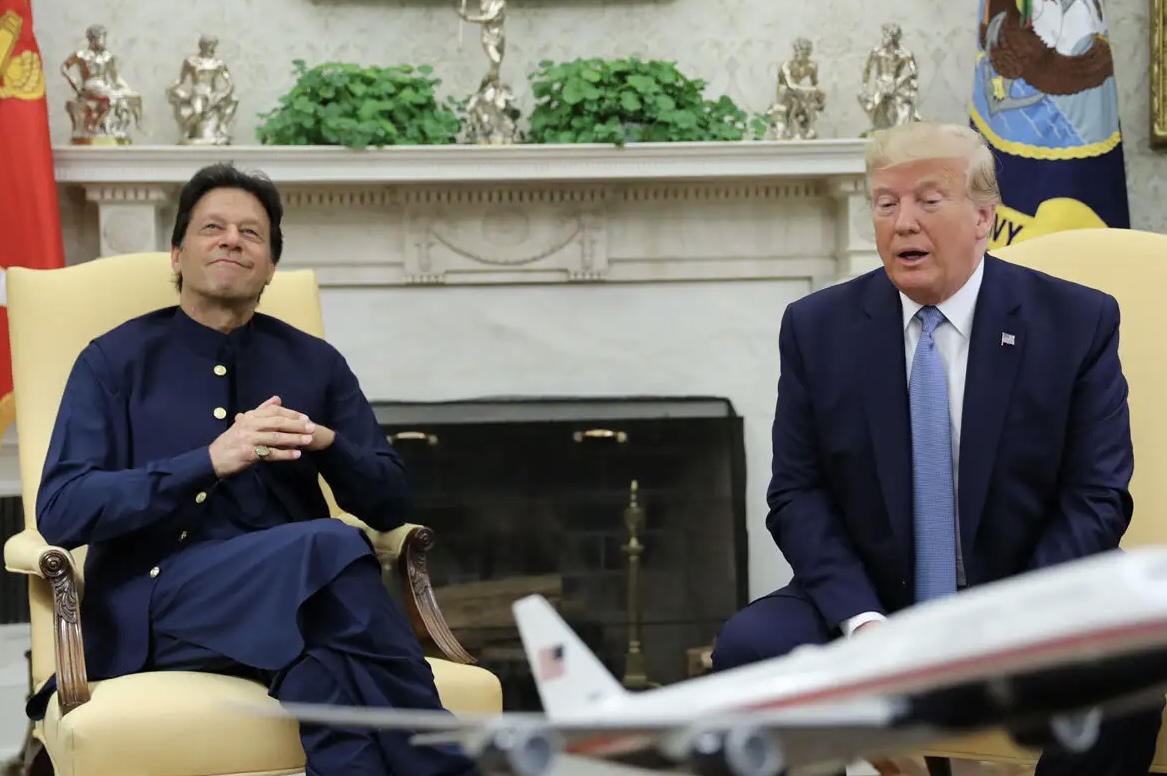
The summer of 2019 still resonates, when Pakistan’s hopes seemed to float across Washington’s skies like fragile dreams. Across the table sat Donald Trump, a president who was first a businessman and only later a politician. For him, every relationship was a transaction, every friendship a deal, every enmity an opportunity. In this game, emotions had no currency, only interests did. That day, the doors of the White House opened for Prime Minister Imran Khan and then army chief General Qamar Javed Bajwa. Yet when they left, their hands were empty, carrying only promises wrapped in words, not deeds.
On July 22, 2019, their smiles on the White House lawn painted the picture of diplomatic success, but behind the scenes the truth whispered another story. The air carried the scent of a secret understanding, one tied to the future of Kashmir. The architect of that deal was Modi, the guarantor America, and the signatory General Bajwa. Imran Khan’s role was limited to placating the nation, to keep alive the narrative even if reality was buried beneath it. What appeared to be a major diplomatic breakthrough was, in reality, a political trap.
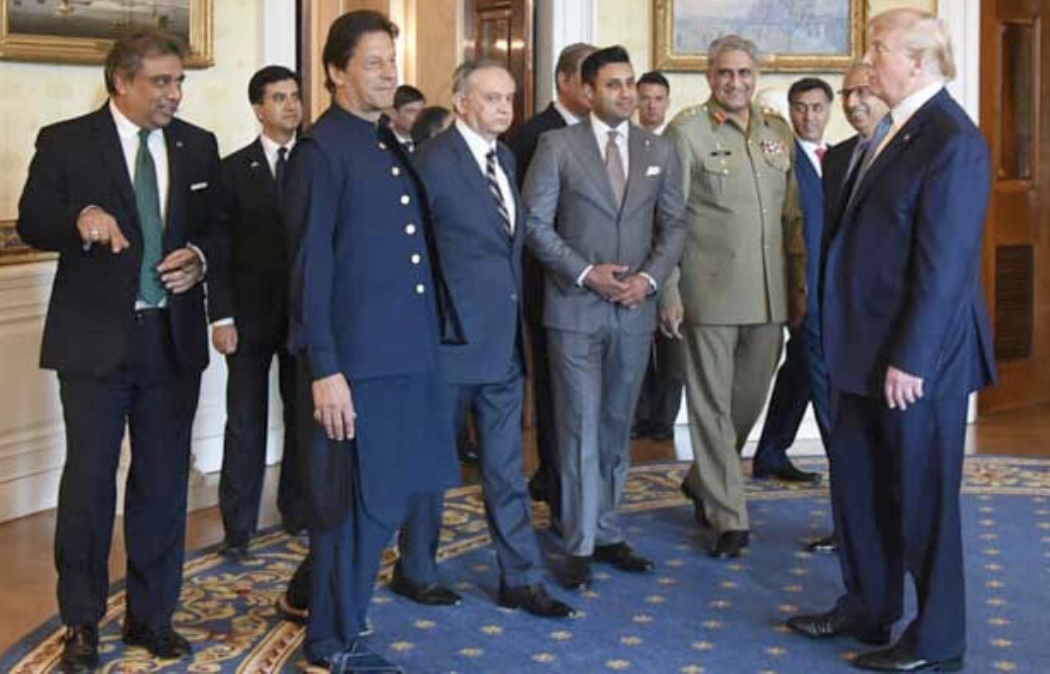
It was on that very day that President Trump startled the world with an offer, declaring:
“If I can help, I would love to be a mediator.”
Even as his words lingered in the air, India immediately rejected the suggestion of US mediation. Just two weeks later, on August 5, 2019, New Delhi revoked Article 370, stripping Kashmir of its special status. The world looked on in shock, while silence prevailed in Islamabad. It seemed everything had already been decided. Pakistan had no strategy beyond words, no plan beyond resolutions, no resistance beyond Friday sermons and collective prayers, announced by Imran Khan. The enemy had gauged that Pakistan’s leadership lacked strength, and exploited it to the fullest.

It must be remembered that on February 14, 2019, an attack in Pulwama killed more than forty Indian soldiers. India placed responsibility on the Pakistan-based group Jaish-e-Mohammad, which Pakistan categorically denied.
In the aftermath, India launched the Balakot air strikes in February 2019. Almost immediately, Prime Minister Narendra Modi began repeating a line that would become the slogan of his election campaign:
“We went into their home and struck.”
The phrase became central to the BJP’s nationalist pitch, used to invoke patriotism and national security ahead of the 2019 elections.
After capturing the Indian pilot Abhinandan, Pakistan released him under U.S. pressure, particularly due to the intervention of President Donald Trump. However, India portrayed this move as Pakistan’s weakness. Modi seized the moment with remarkable cunning, and just two weeks after Trump’s meeting with Imran Khan and General Bajwa, he revoked Article 370, stripping Kashmir of its special status and legally annexing it into India. This was the same tactic Israel used against the Palestinians, who today live in a state of helplessness.
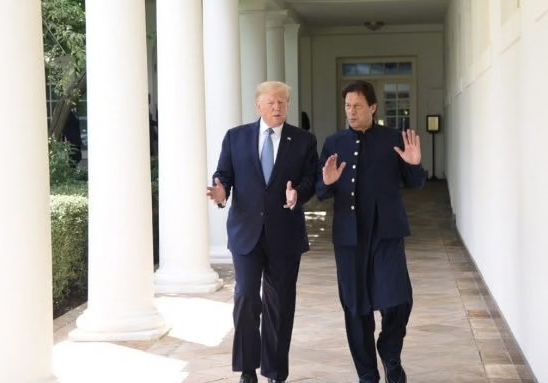 Former Prime Minister of Pakistan Imran Khan being given a tour of the White House by President Trum۔
Former Prime Minister of Pakistan Imran Khan being given a tour of the White House by President Trum۔
Modi knew well that under Trump’s mediation, Pakistan’s military and political leadership, the army chief and prime minister, had already entered into a tacit understanding. It was this calculation that emboldened India to take an aggressive step that irreversibly altered the status of Kashmir. Pakistan, in the process, gained nothing tangible.
In the days that followed, Imran Khan sought to rally the nation with fiery speeches. In September 2019, at the United Nations General Assembly, his words drew thunderous applause. He likened Modi to Hitler and Mussolini, warned of nuclear war, and spoke against Islamophobia and global injustices. I was present there, witnessing the intensity in his words. Yet behind him stood no military power to convert those words into reality. The speech was fire; what followed was the cold ash of inaction.
What did Pakistan receive from Washington in 2019? A few photographs, a handful of promises, temporary respite from FATF pressure, and acknowledgement for cooperation on America’s Afghan agenda. And what did it give? Silence on Kashmir, time and space for India, operational assistance in Afghanistan, and for its people nothing more than verbal protests.
Thus, the 2019 visit proved a failed bargain for Pakistan with a businessman-turned-president who took what he needed but paid nothing in return. Delhi reshaped the ground realities, while Islamabad circled endlessly around resolutions and rhetoric.
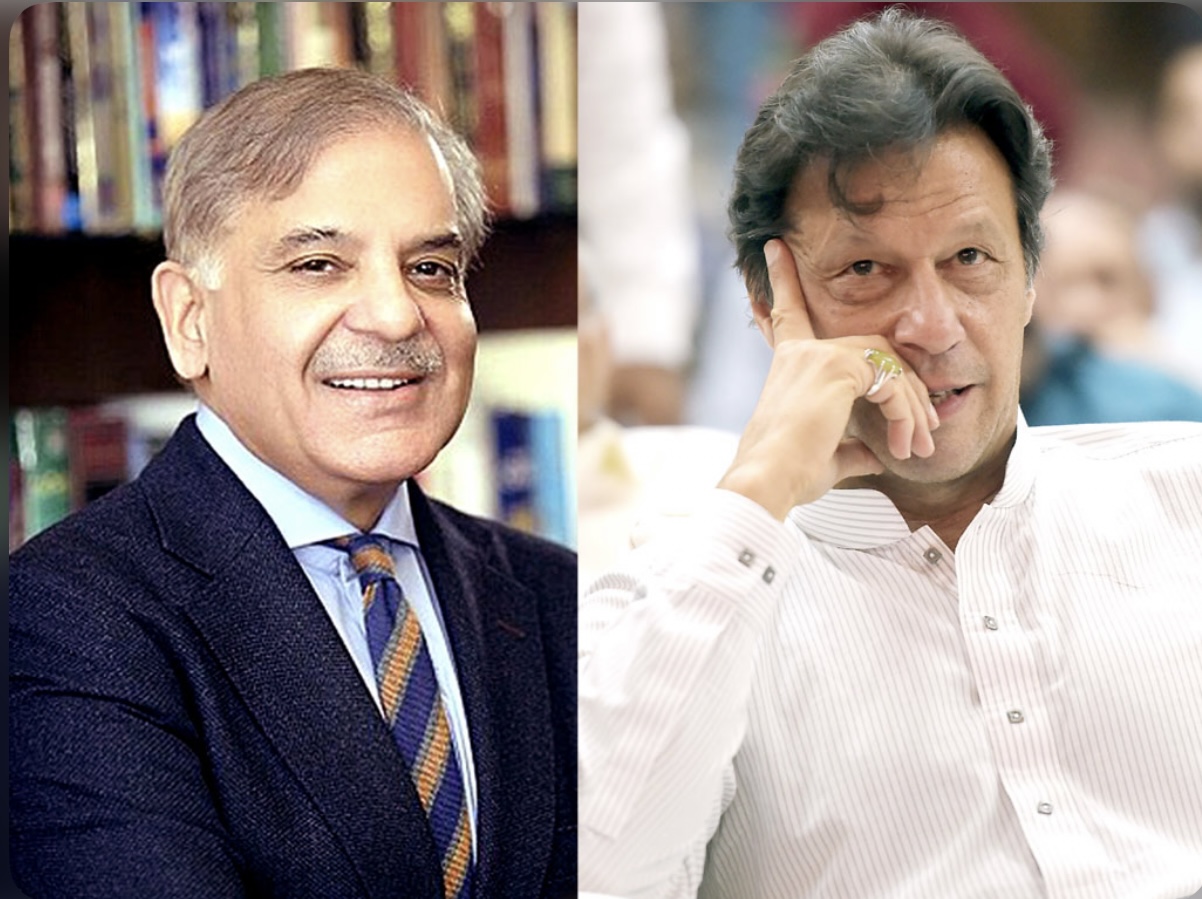
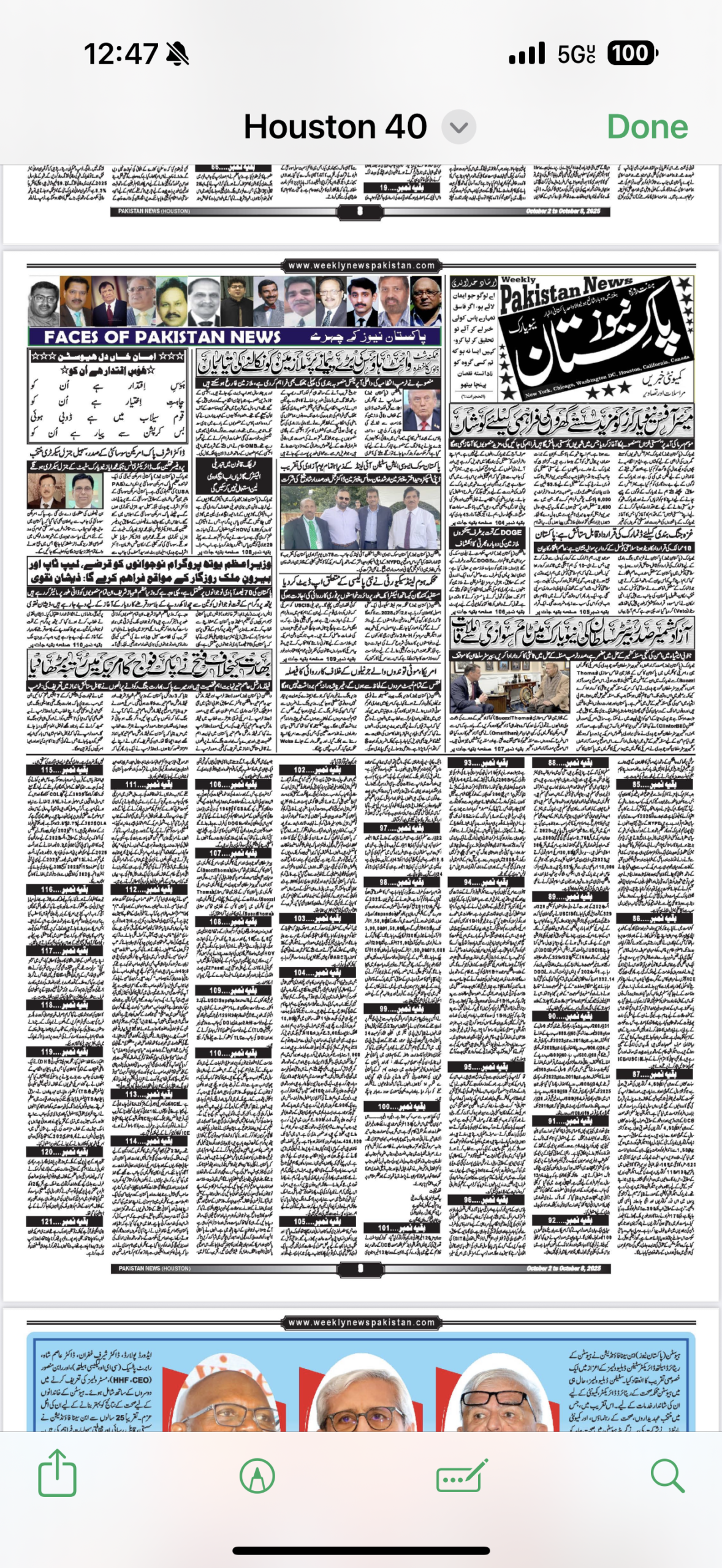
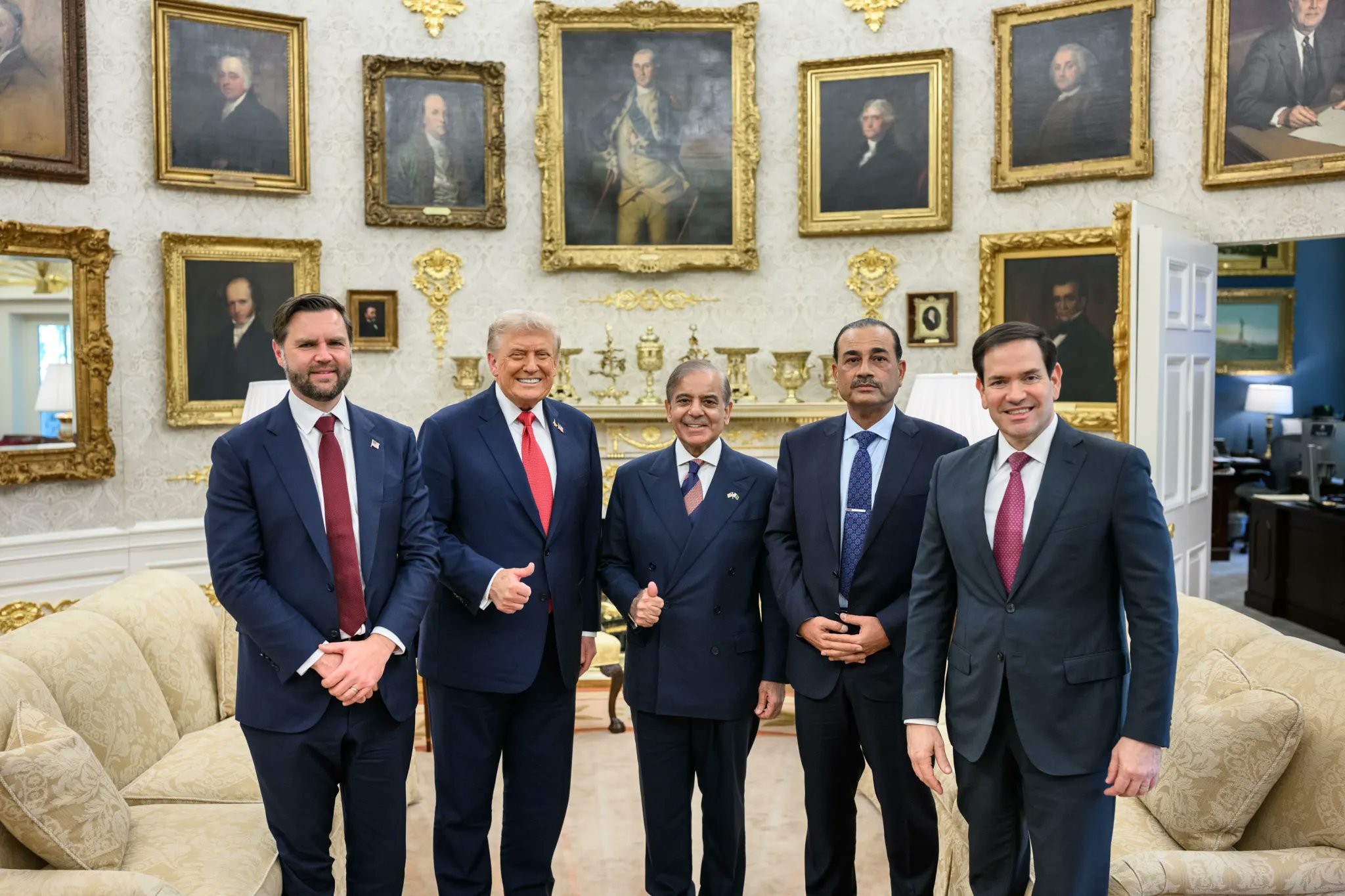
Time passed, but history’s game never stopped. In 2025, it was the same Washington, the same white walls, yet the scene was entirely different. On the chessboard of geopolitics, the colour of the pieces had changed. This time, the contest was not only about Kashmir. The board carried new alignments of the region, the echoes of the Abraham Accords, the complexities of the Saudi-Pakistan defence pact, strategies of a potential war with Iran, the rise of cryptocurrency and the reshaping of the global financial order, and even President Trump’s dreams of a Nobel Peace Prize.

President Trump at the White House giving his signature thumbs-up alongside Prime Minister of Pakistan Shehbaz Sharif and Field Marshal Asim Munir.
Before entering the arena, one man prepared in silence behind the scenes ,Field Marshal General Asim Munir. He worked on fronts unseen yet deeply felt. He built trust, redirected relationships, and when he walked through the doors of the White House, he did not come empty-handed; he carried the weight of strategic leverage. Within the closed-door meeting, everything was placed on the table, tough questions were raised, decisions made, and a new chessboard was laid out that could alter the balance of global power.
This was no longer just a meeting; it was a battle of wits, where smiles were but a façade and the real game was played in the silent language of the eyes. The real question was not who shook hands with whom, but who outmanoeuvred the other, who gained, and who lost.
After the Pahalgam terror attack, on May 7, 2025, India attempted a major offensive. Pakistan not only thwarted the attack but also downed Indian fighter jets, forcing the adversary into retreat. This was more than a military success, it was a victory of narrative as well. Against this backdrop, Prime Minister Shehbaz Sharif took the podium at the United Nations. This time, his words carried the force of a successful defence and the credibility of unified diplomacy.
His speech was a storm of words. He hailed President Trump as an ambassador of peace and nominated him for the Nobel Prize. It was both a taunt directed at India and a message to the world that the game was no longer one-sided. He thanked China, Turkey, Saudi Arabia, Qatar, Azerbaijan, Iran, and the UAE, not merely as a roll call of allies, but as a declaration of Pakistan’s diplomatic success.
Modi, notably, did not attend the UN session that year. Perhaps he knew the board had shifted, and on that day Pakistan’s hand was stronger. Indian media screamed that this was not Pakistan speaking but Trump’s advocacy. Yet the reality was clear: Islamabad had drawn all the players onto the board and in doing so dismantled India’s fading narrative.
A ceasefire was brokered under American auspices, friendly nations openly stood with Pakistan, and its diplomacy earned a success that translated into political capital at home. At the same time, the Saudi-Pakistan defence pact was finalised with Washington’s blessing. The message was unambiguous: “We stand together, but on our terms.”
This was the defining difference between 2019 and 2025. In 2019, promises came first, followed by empty hands. In 2025, action came first, and the announcement followed. That is why Shehbaz Sharif’s words carried weight; he was returning from the field, not selling dreams.
In 2019, Pakistan stood alone. On Kashmir, no one stood with it, not even the Muslim world which restricted itself to symbolic statements. But in 2025, Pakistan was not isolated. This time, allies stood shoulder to shoulder, and Islamabad traded concessions to secure concessions. For the first time, a major deal bore not only others’ signatures but Pakistan’s decisive stamp as well.
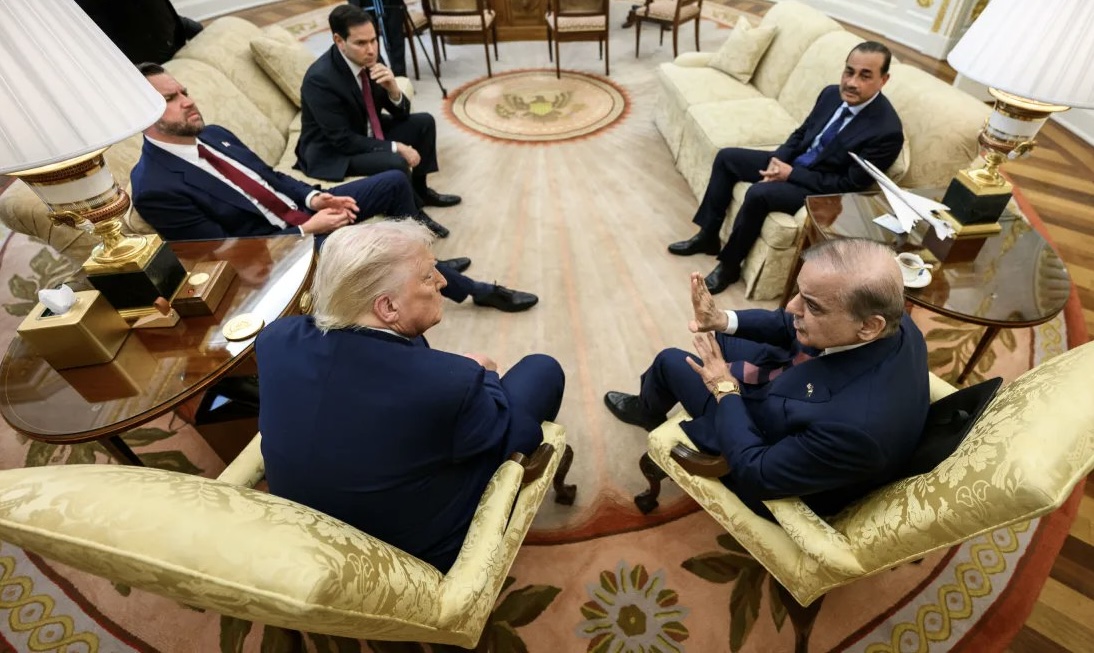
At the White House, President Trump with Prime Minister of Pakistan Shehbaz Sharif, flanked by the Field Marshal on his right and the U.S. Vice President and Secretary of State on his left.
The greatest lesson of this chess match was clear: if you announce first and act later, the enemy redraws your map. But if you act first and announce later, the enemy’s narrative collapses on its own.
In 2019, Pakistan announced first and acted later and Delhi reshaped the reality of Kashmir while Islamabad watched. In 2025, Pakistan acted first and then declared and that is why India’s narrative faltered, while Pakistan’s stance emerged with strength before the world.
This time, General Asim Munir was not behind the curtain, but at the forefront. It was a positive change, for every success and every failure now bore his responsibility. He played moves in closed rooms that not only altered the board but defeated the adversary’s narrative.
At the historic White House luncheon, his confident smile declared that Pakistan was no longer a pawn it had become the master of the game.
And as always, at the end of the game comes the inevitable:
Checkmate — or as it is called in Persian, Shah Maat.
⸻———————
